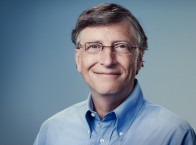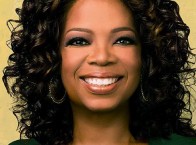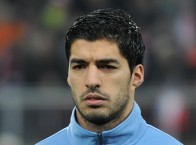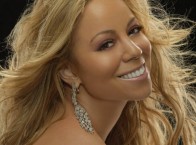What is branding? Is it just a logo or a commercial? Or is it the story the marketing tells behind the artwork? All of the most successful businesses around the globe use several key tactics to stand out from their competitors. Their trademarks are unique, and they bring value to the company that customers know is special.
There are many different types of trademarks that benefit a company's growth, and we'll list some of the most distinctive ones in the world. Secondary meaning trademark is another important term to discuss.
Secondary meaning trademark occurs when a company takes a term that wouldn't normally be associated with a product, and they build up a reputation in their industry to allow them to trademark this secondary term. We'll talk about examples of secondary trademarks along with other important terms in trademark law.
#1 - Apple Inc.
Apple is the most recognizable secondary trademark in the world. The reason is they have the brand influence and sales success to immediately pop up in their customers' minds the second the word "apple" is said. Apple's journey is one of innovation and dedication to a specific marketing strategy.
Apple has always been known for its trim design. Their logo is a piece of fruit, but it's not artistic or colorful. It isn't red or green like a real piece of produce. It's a very barebones, slender piece of branding that immediately makes the customer think about the company's approach to making technology.
Apple is famous for making computers, phones, and tablet computers that bear creativity and encourage productivity in the workplace and the home space. People who use Apple products are all about updating to the latest and greatest technology in the world.
This is why the launch of the new iPhone every year is a huge event. Customers stand outside of the store at midnight to get the new gadget. Their marketing and their trademarks are right in line with their products. They are simple, yet striking.
#2 - McDonald's
The world's largest restaurant chain is instantly recognizable no matter what country you are in. The golden arches that sit on top of the building or the side of the road instantly bring to mind thoughts of cheeseburgers and french fries.
The McDonald's logo is not a secondary trademark. The arches don't depict any previously known object like Apple does. This made it very easy for the company to make customers associate those arches with their food as the brand took off.
Once again, the simplicity of the logo is key. Most of the best trademarks around the world are simple, or they take an already famous word or phrase and tweak it just ever so slightly. The logo of McDonald's lets you know you will be getting the same thing you always have from them, whether you like the food or not.
It also helps that perhaps no brand has used more celebrities to endorse its products than McDonald's. From Michael Jordan to Gabrielle Union, people know if celebrities want to eat these burgers, then they want to as well.
#3 - Windows
Much like Apple, Microsoft was able to take a simple word, "window", and associate it with their computer programs. The secondary meaning of the word took off instantly as Bill Gates' company became the world's most prominent operating system in the 1980s and 1990s.
It only helped further the marketing strength of the trademark as Microsoft continued to make new versions of Windows operating systems. With each new update, the world came to understand the power of the Windows trademark and associated the word with their products.
Even as Microsoft has lost some of its market share to Apple, Android, and Google through the years, their strong trademark has allowed them to stay relevant in their industry. This shows that if you pick a trademark and stay with it for decades, you will have the best chance for success.
This is an especially relevant conversation right now, as several big companies are trying to change their names. Facebook switched its company name to Meta in 2021, an interesting choice for the world's most famous social networking site. Trying to make customers associate your product with a different trademark after so many years is not what most branding experts would advise.
#4 - Starbucks
Starbucks is one of the most recognizable brands in the world because its design is so elegant. It's not as simple as the other trademarks we've talked about. Instead, it depicts a mermaid encased in a circular green shape.
This is more complex than golden arches or a fruit. The name is also unique. It is a reference to nautical life and a character in the famous novel "Moby Dick". Because the name is based on such an obscure reference, it has been incredibly easy for Starbucks to get their trademark to flourish.
Water is also relaxing, and a day in a cafe is typically supposed to be the same. The ways Starbucks uses branding are different from any other big company. The names of their products are complicated, which is a huge contrast from most other brands.
This has worked brilliantly in an industry that is quite oversaturated. It shows there are a variety of ways to achieve marketing success. Entrepreneurs need to decide whether it is better to go with a simple branding route or a complicated one, and it depends on the industry and the product being sold.
#5 - Switch
Nintendo's most successful home video game console ever is also a great example of the way secondary trademarks work. It also plays on the literal meaning of the word "switch". The game system can switch from being portable to plug-in depending on the preference of the gamer.
With sales of over 100 million units, Nintendo has achieved success by letting customers know about how the console works right in the name of the product. If other companies did this, it would be much easier for them to create their own secondary trademarks.
The legal system wants to see that businesses are using their trademark to create a meaning for their product. The Nintendo Switch is able to do so because of the company's enormous brand loyalty and trust given to them by consumers. With over 100 years in the industry, it's hard to deny their marketing pedigree.
And this is where it starts for every business. If you make a product that sells, and you do it for a long time, you build a reputation. From insurance commercials to computer game logos, this is truly the only way for brands and trademarks to gain traction.
Shawn Laib writes and researches for the legal site, FreeAdvice.com.
He wants to explain how marketing requires a lot of legal understanding to pull off adequately.

 Share on Facebook
Share on Facebook




















